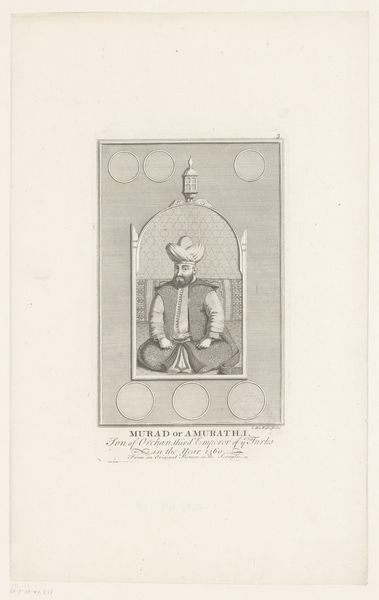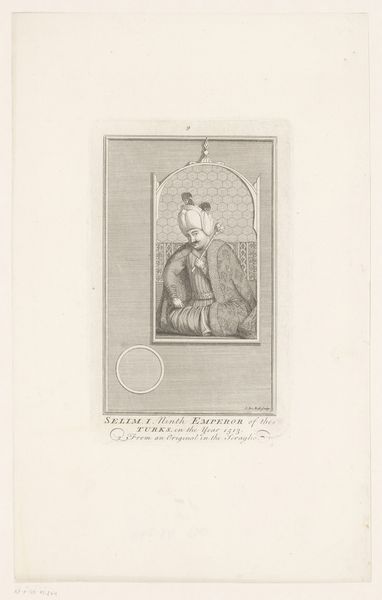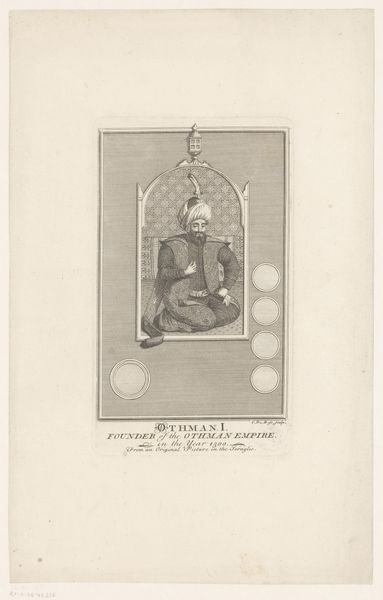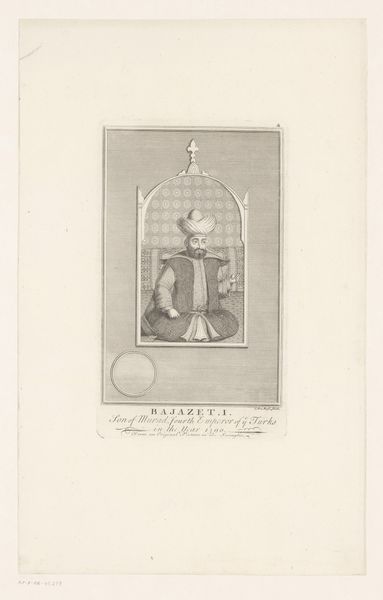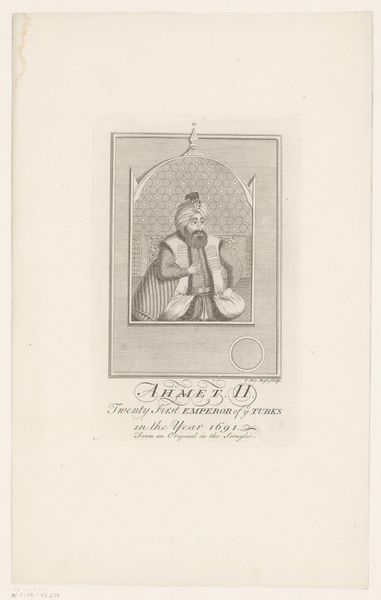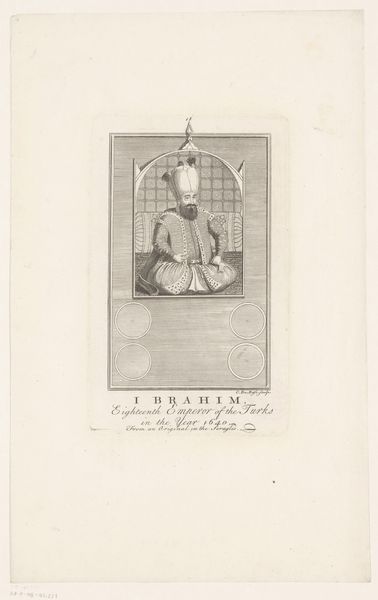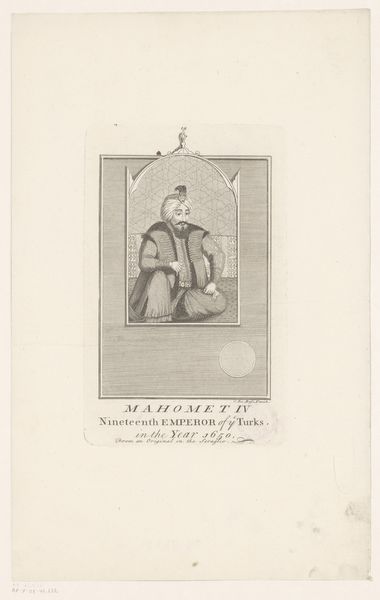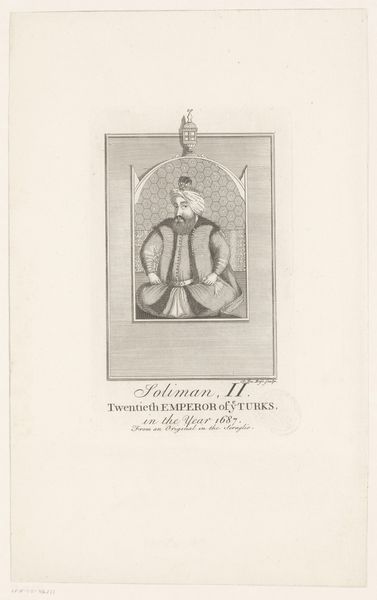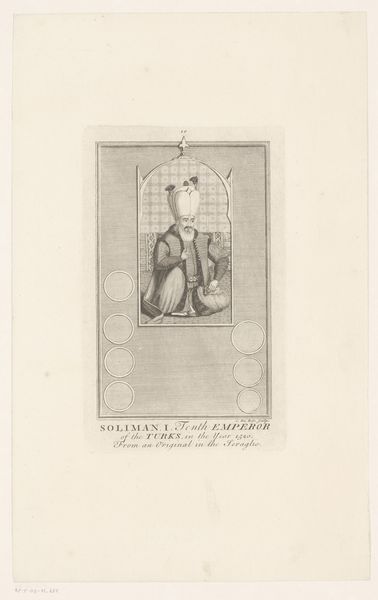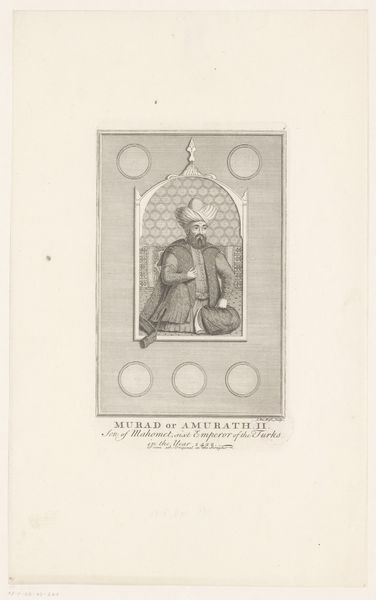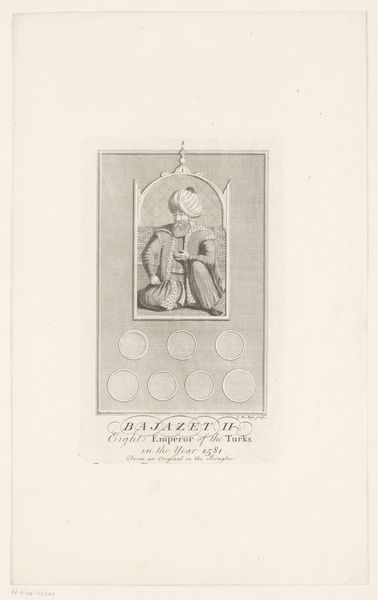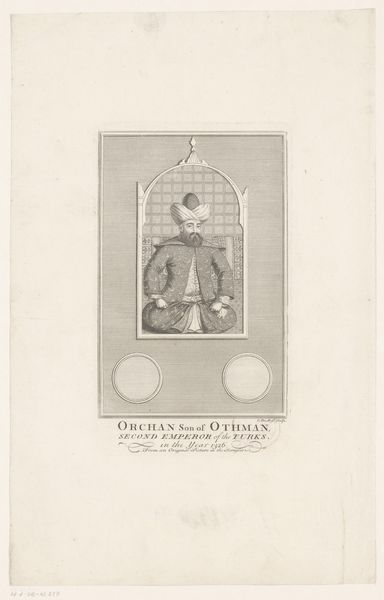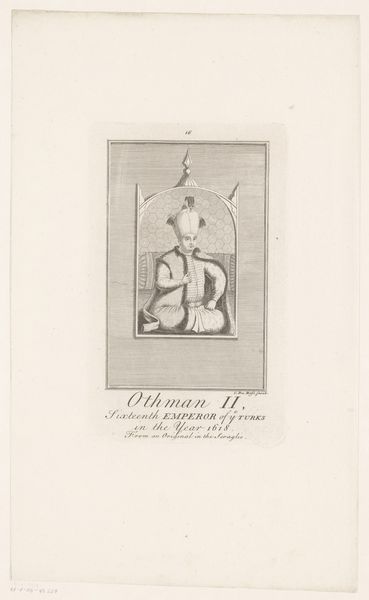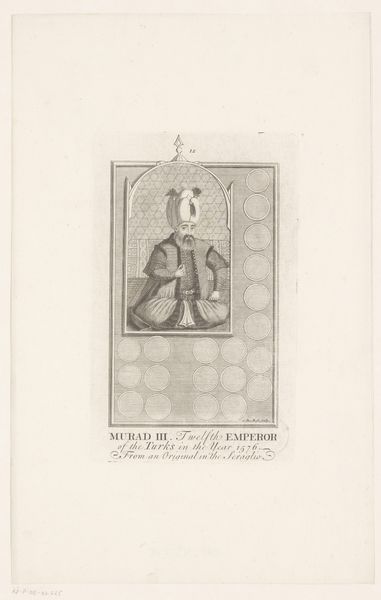
print, engraving
#
portrait
#
baroque
# print
#
pencil sketch
#
old engraving style
#
figuration
#
islamic-art
#
history-painting
#
engraving
Dimensions: height 198 mm, width 117 mm
Copyright: Rijks Museum: Open Domain
Curator: It's amazing how much presence the artist creates using simple engraving techniques. This is a print made by Claude DuBosc, titled "Portret van Mahomet I," dating approximately from 1692 to 1745. The details are striking given that the primary medium is ink on paper. Editor: My first impression is one of studied formality. The subject, presumably a historical figure of significance, is carefully framed and positioned. But tell me, what was DuBosc's relationship to this figure? How did that inform his artistic decisions and the ultimate impact of this historical representation? Curator: That's a crucial point. While DuBosc himself was a printmaker and engraver operating in a European context, the figure depicted is Mahomet I, an important figure in Ottoman history. This presents an immediate power dynamic at play regarding representation and access to image making in the 18th century. It's important to address the process of disseminating and reproducing images that reach far and wide, shaping popular perspectives through affordable reproductions such as this. Editor: Absolutely. And looking closer, it seems clear DuBosc wasn't creating from first-hand experience of Mahomet. You see an Ottoman ruler rendered through a distinctly European lens, likely shaped by orientalist perspectives common at the time. Notice the detailed but almost theatrical clothing, which underscores the inherent challenges in portraying figures from distant cultures accurately and ethically. Do you find this portrayal exploits or exoticizes this representation? Curator: It's undeniable that this print reflects European perceptions. To be fair, DuBosc would likely never have even encountered someone from this context and would rely on previous visual renderings, as noted in the print description stating "From an Original in the Seraglio." So, to your point, questions surrounding artistic interpretation, appropriation, and the manufacturing of public ideas become paramount in the reception of works such as this. Considering the socio-political circumstances surrounding this type of production allows us to contextualize these important topics. Editor: Precisely. What seems at first glance to be simply a historical portrait becomes a rich site for discussing the politics of representation, intercultural dialogue and its challenges. I wonder, too, how audiences of the period might have perceived such images, considering that cultural interactions continue to become more and more complex over time. Curator: Indeed, and perhaps interrogating prints like these encourages much needed discussions about material culture production. Editor: Hopefully, we've offered listeners a deeper, intersectional, understanding of a seemingly straightforward historical image.
Comments
No comments
Be the first to comment and join the conversation on the ultimate creative platform.
